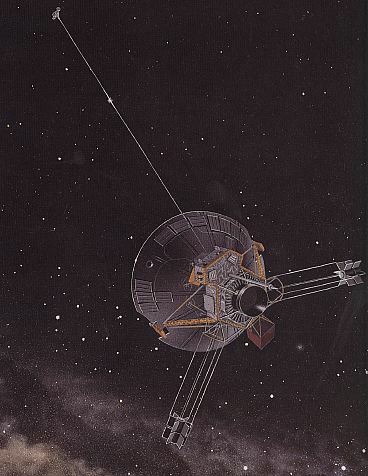Thirty years ago today — June 13, 1983 — the Pioneer 10 spacecraft left the solar system, becoming the first man-made object to pass beyond the farthest planet from the Sun.

(Pioneer. NASA image.)
At the time, Pluto was still considered a planet but its eccentric orbit had it inside the orbit of Neptune. So when Pioneer 10 passed beyond Neptune’s orbit, it became the first spacecraft to travel farther from the sun than our system’s planets.
In other space history, 5 years ago this week* — on June 11, 2008 — the Fermi Gamma-ray Space Telescope launched from Cape Canaveral on a Delta-II rocket. Originally called the Gamma-ray Large Area Space Telescope, Fermi was designed to conduct a sky survey of gamma ray sources. Its mission objectives were to
(1) explore the most extreme environments in the universe;
(2) search for signs of new laws of physics and understand the composition of dark matter;
(3) study the acceleration of relativistic velocity jets of material by black holes;
(4) detect and collect data on gamma-ray bursts; and,
(5) help gain a better understanding of other cosmic phenomena, such as solar flares, pulsars, and the origin of cosmic rays.
Fermi is still operating, and you can learn more about it and its discoveries here.
___
*Missed posting this on the actual anniversary because of problems accessing the National Space Science Data Center.









